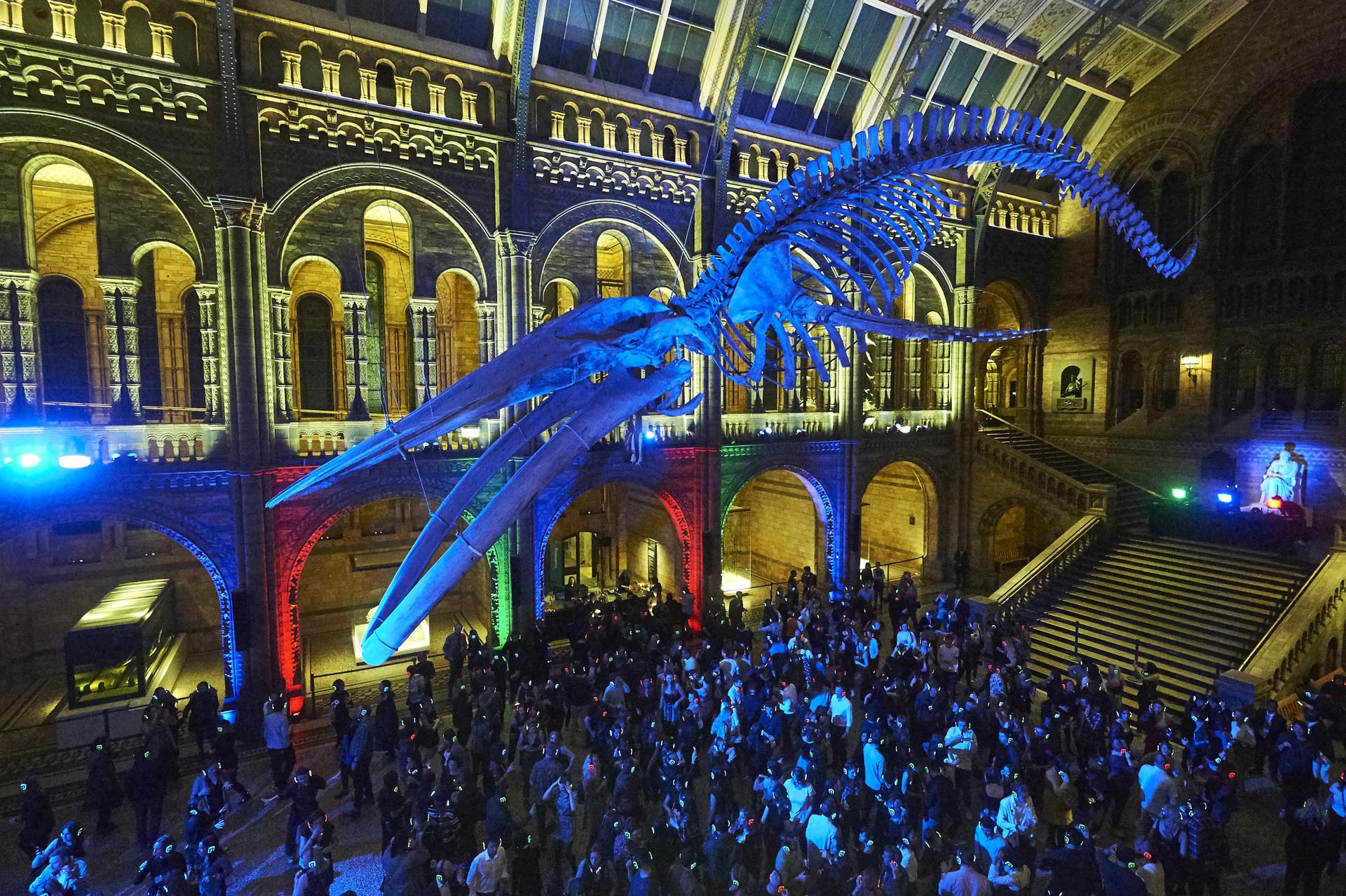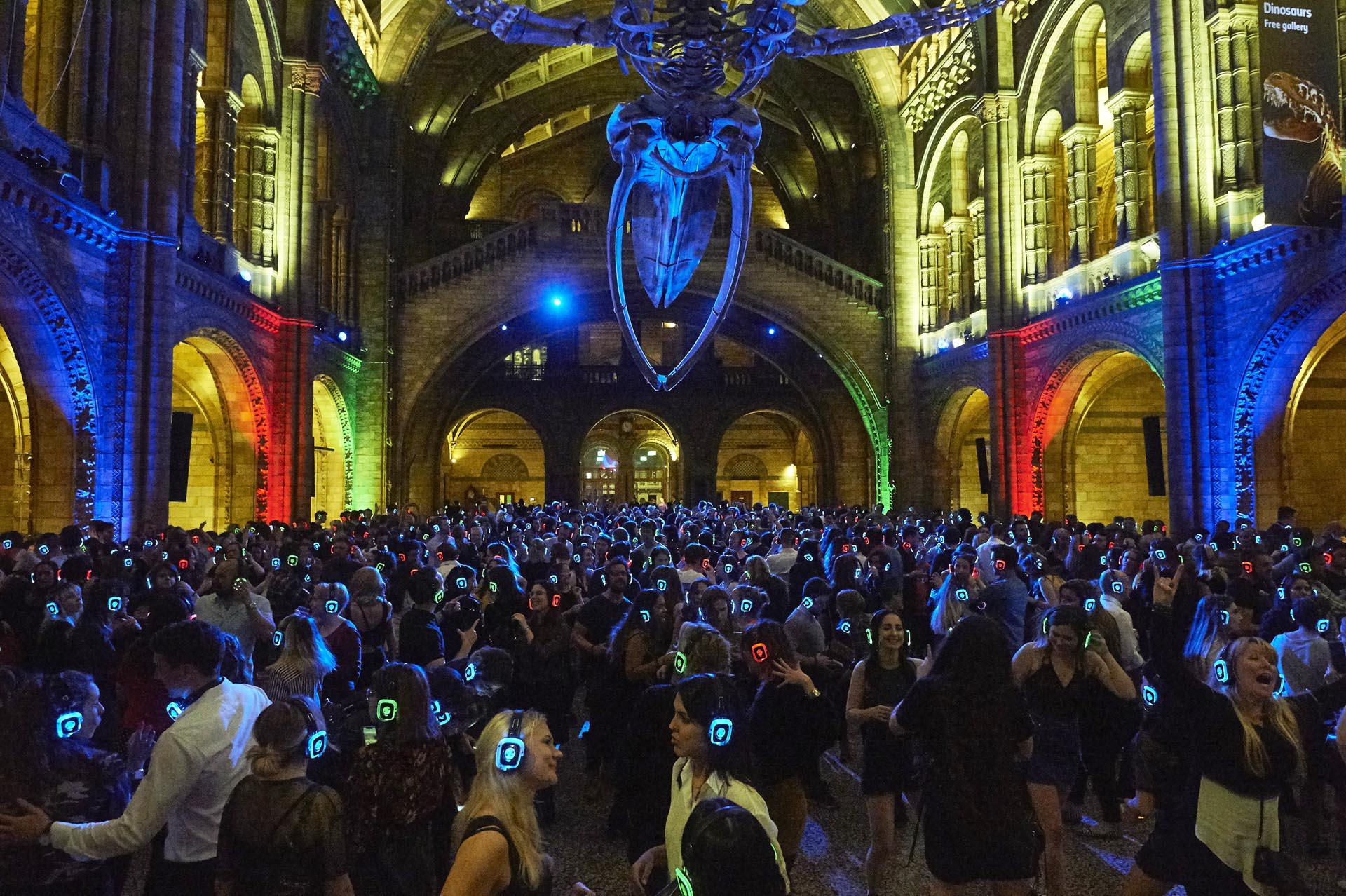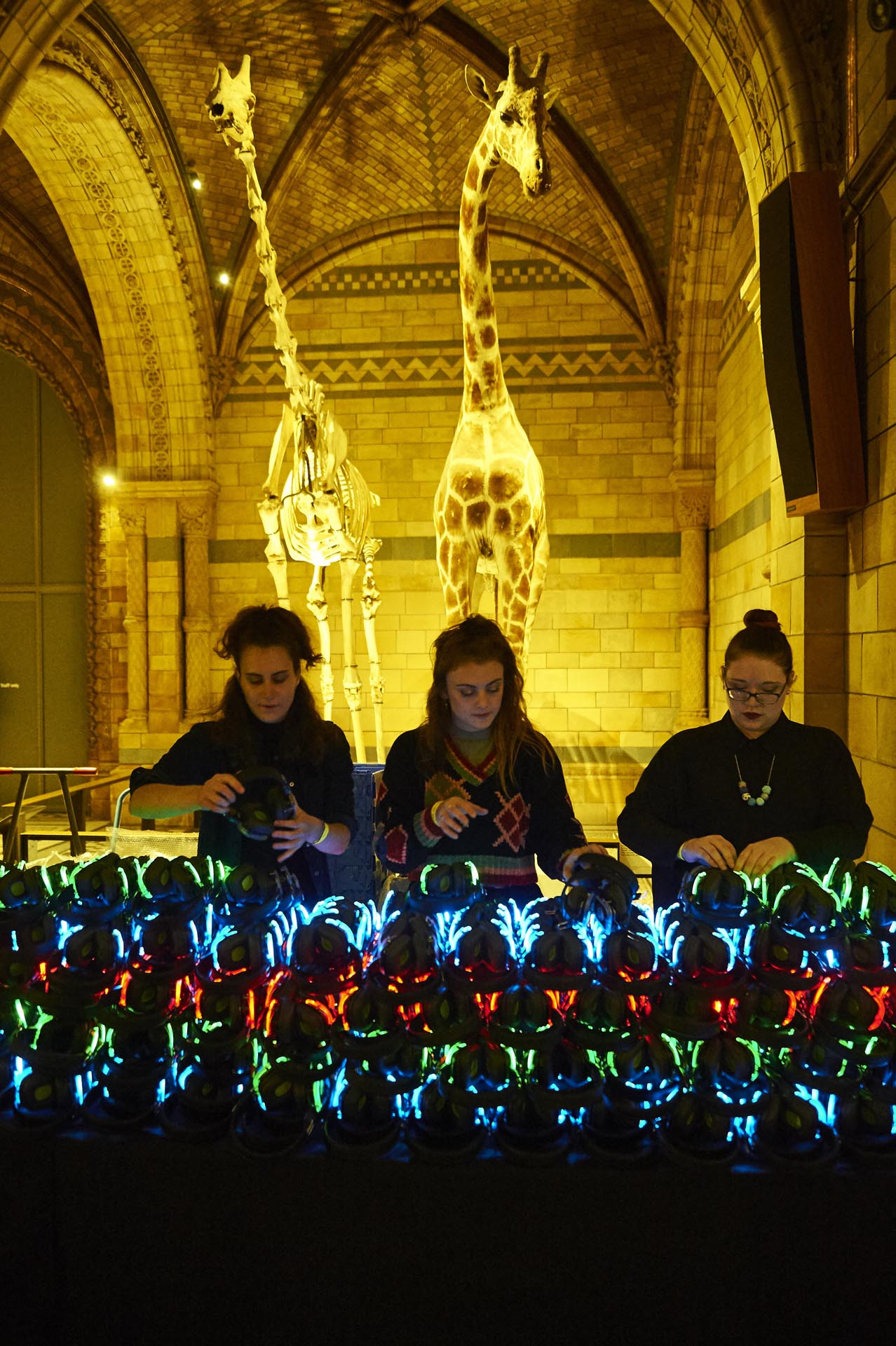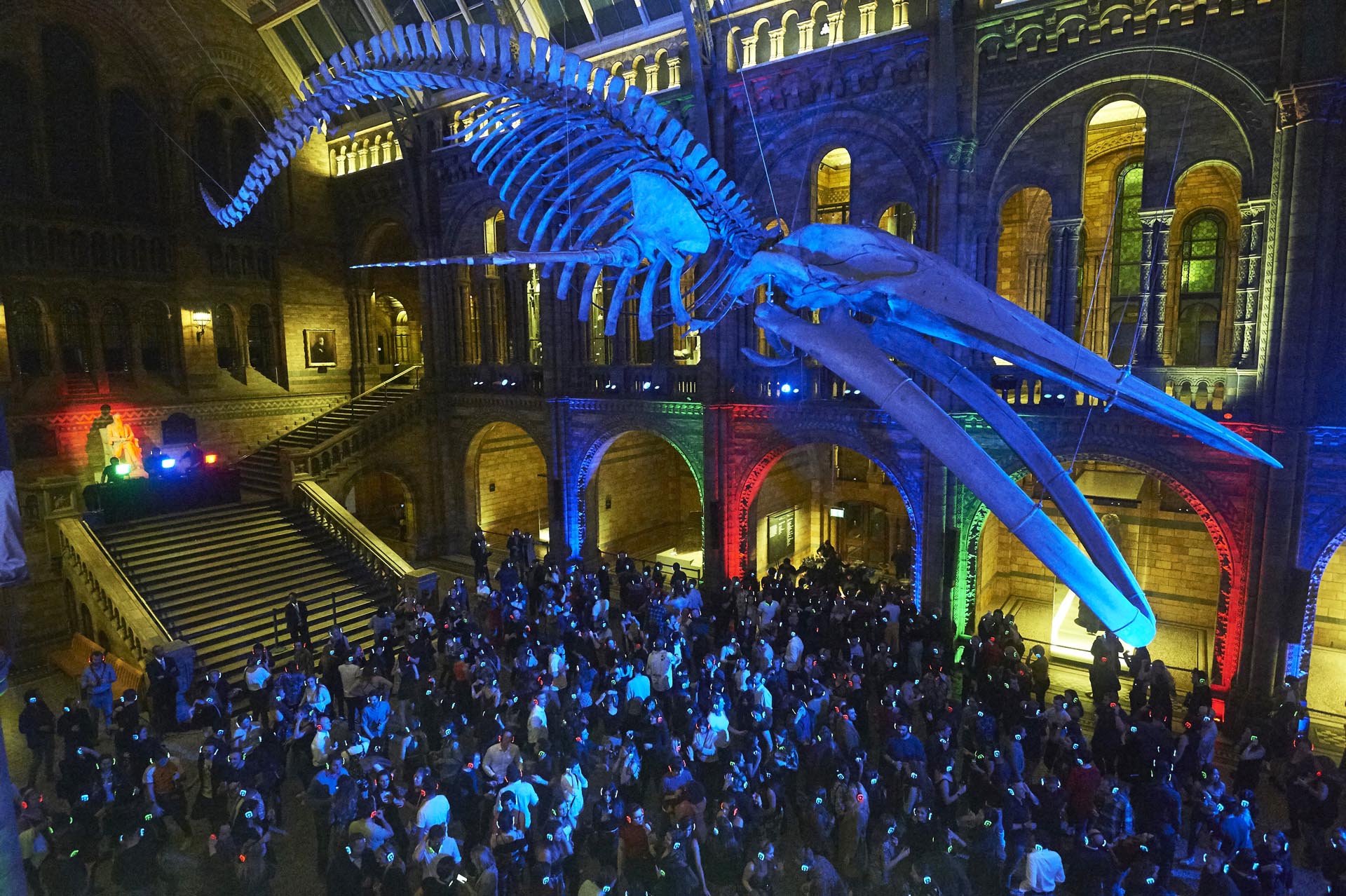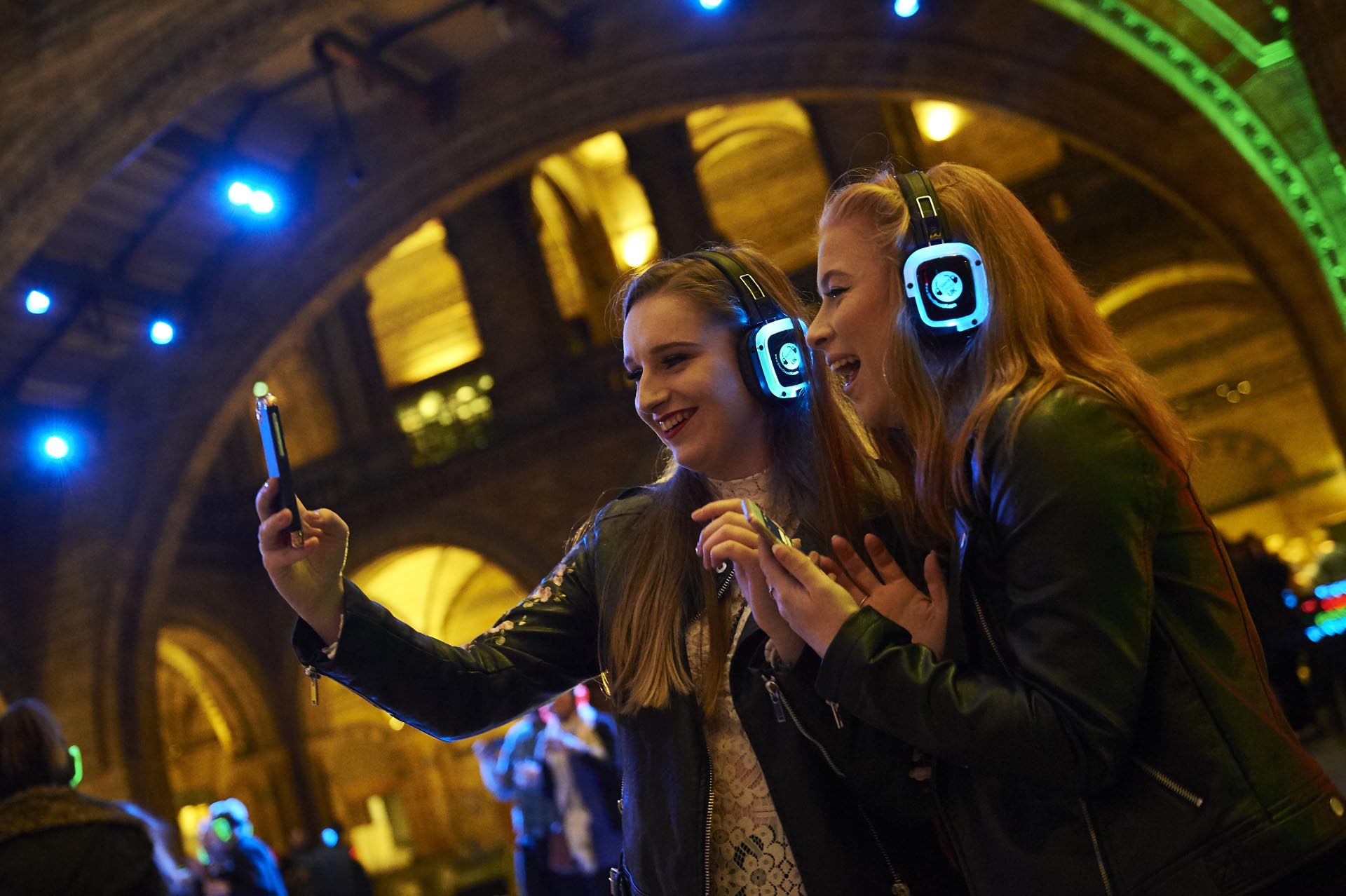Dance with the dinosaurs
The silent disco is hosted every last Friday of the month. Located in the iconic Hintze Hall, under the 25m blue whale skeleton, the quiet party runs from 10pm to 1am. Guests dance the night away while listening to music on specially designed wireless glowing headphones instead of speakers.
You can match your music taste by switching through multiple channels, each featuring songs from different eras and genres. Three DJs stand in front of the statue of Charles Darwin who cannot seem to decide whether red, green or blue light suits him best.
There is also a full bar serving a range of drinks to quench your thirst while you bust out some of your best moves.
Break the silence
Once regarded as a mere novelty, the silent disco has unfurled its influence across the expanse of the music and event industry, making its presence felt from the towering marvel of The Shard to the places of warship, including Canterbury Cathedral.
At The Natural History Museum the project was launched in 2018, since then every event attracts up to 860 visitors and usually sells out well in advance. It’s definitely feelgood night out focused on bringing people together to sing the songs they love in the spectacular surroundings.
Bringing people together
“The sheer variety of the visitors we have coming along to silent discos, people from all around the world, young and old, all enjoy it equally. It really is a joyous project to oversee. Watching people’s faces when they walk in and see Hintze Hall spectacularly lit keeps me coming back for more!” said Robbie Watts, the museum’s Events Producer. “We hope that those who come along to the Silent Disco will develop an interest in what else the Museum has on offer and engage with.”
Silent discos are great fun but having one in a majestic museum surrounded by dinosaurs is more than a novelty, it’s perhaps the coolest silent disco ever. We’ve been to many silent discos but this is by far the best and we’ll sure be back.
New dates have been released for June 28, July 26, and August 30 but tickets tend to sell out fast. Bookings and more information can be found here.
Image credits: © The Natural History Museum


